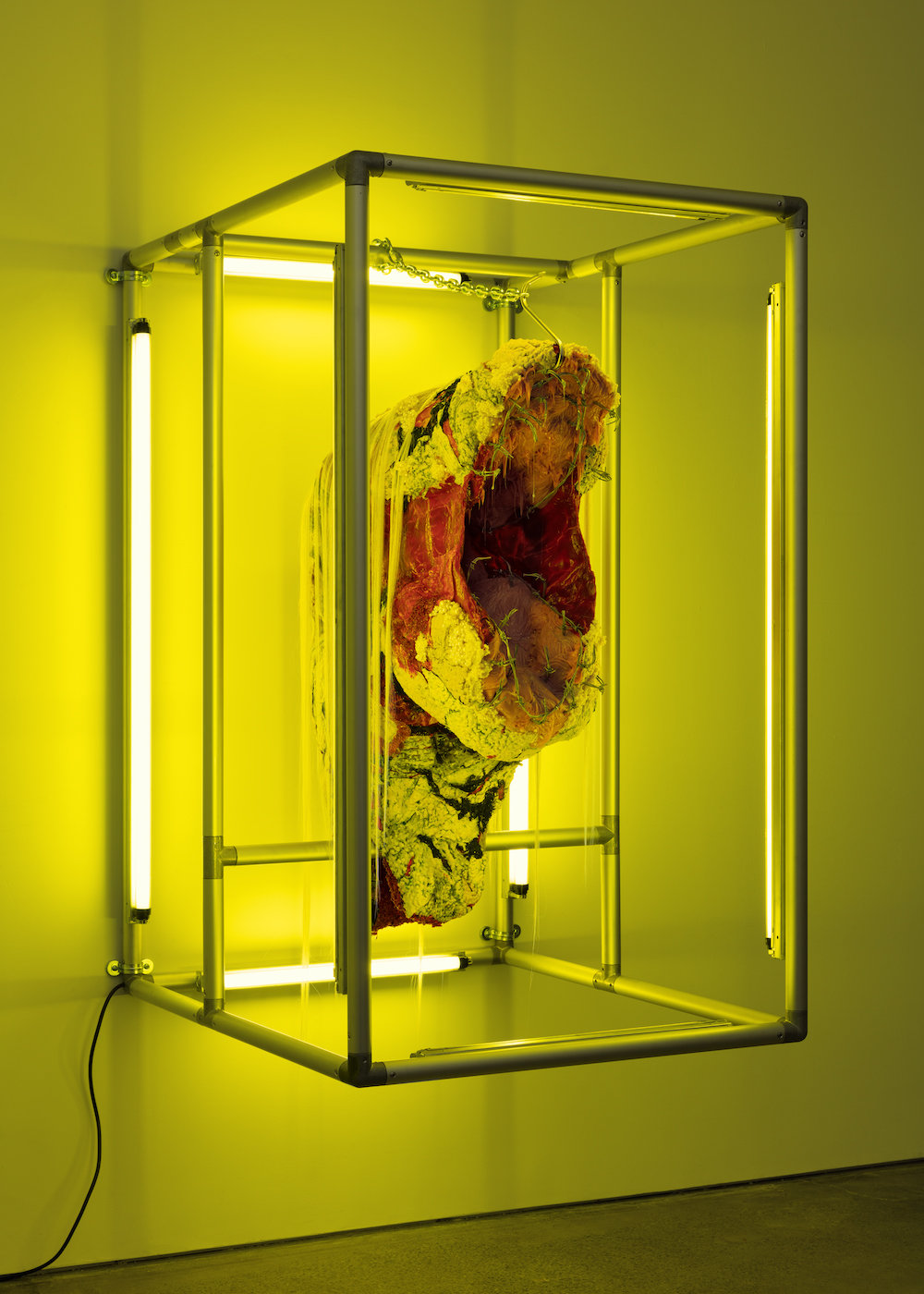THE PALE ONE (2020)

Doreen Garner, THE PALE ONE, 2020
Silicone, urethane foam, pearls, Swarovski crystals, barbered wire, hair weave, fluorescent light, aluminum, steel, 153 x 91 x 113 cm
Courtesy the artist and JTT, New York
THE PALE ONE (2020) is a creature with pale white flesh that, like Janus, is two-faced — the viewer sees a horse’s head stretching out in their direction, but with the open mouth of a dragon. This object, whose body is mainly made of silicon and urethane foam, is adorned with eyelashes of artificial platinum blond hair and with crystals. The gaping hole of the dragon’s mouth has teeth made of barbed wire. The head is placed within an aluminum frame, attached by hooks and chains, while the frame is decorated with yellow neon tubes. This work refers to the pale horse belonging to one of the horsemen of the Apocalypse from the Biblical Book of Revelation: an animal bearing death on its back and with the power to carry away a quarter of the population of the earth. For Garner this prophecy of the pale horse has been fulfilled, in the past through infectious diseases such as smallpox, yellow fever, influenza and many other illnesses that were disseminated among indigenous nations and communities during the colonial period by white bodies acting like Trojan horses. In our contemporary context of a global pandemic the artist also sees the apocalyptic narrative as realized, from her perspective: countless white Americans resisted the social contract of humanity right at the height of the pandemic and refused to adhere to social distancing rules and to wear masks. While the sense of invincibility grew among the careless, the numbers of the dying increased, and among these in the United States disproportionately many black and brown people. Garner’s work slowly takes apart the connecting fabric between the dark history of the medical industry and white dominance. Medicine was used and developed in order to clearly prioritize the healing and protection of white bodies above those of all other parts of the population, a practice that seems to continue to this day.